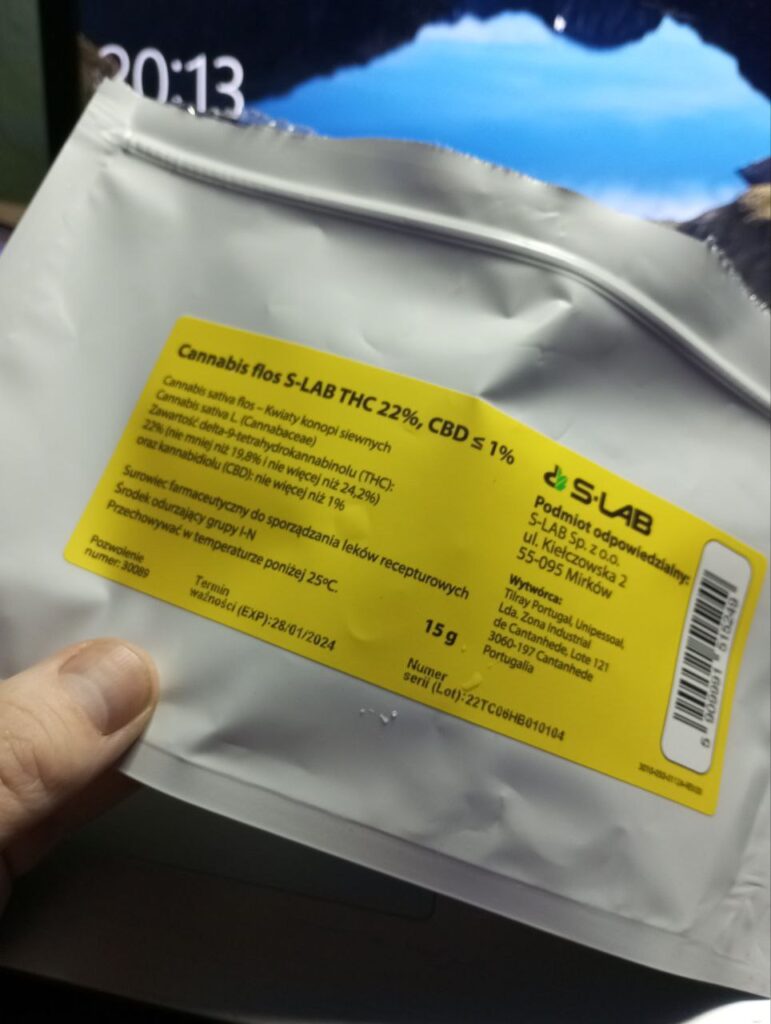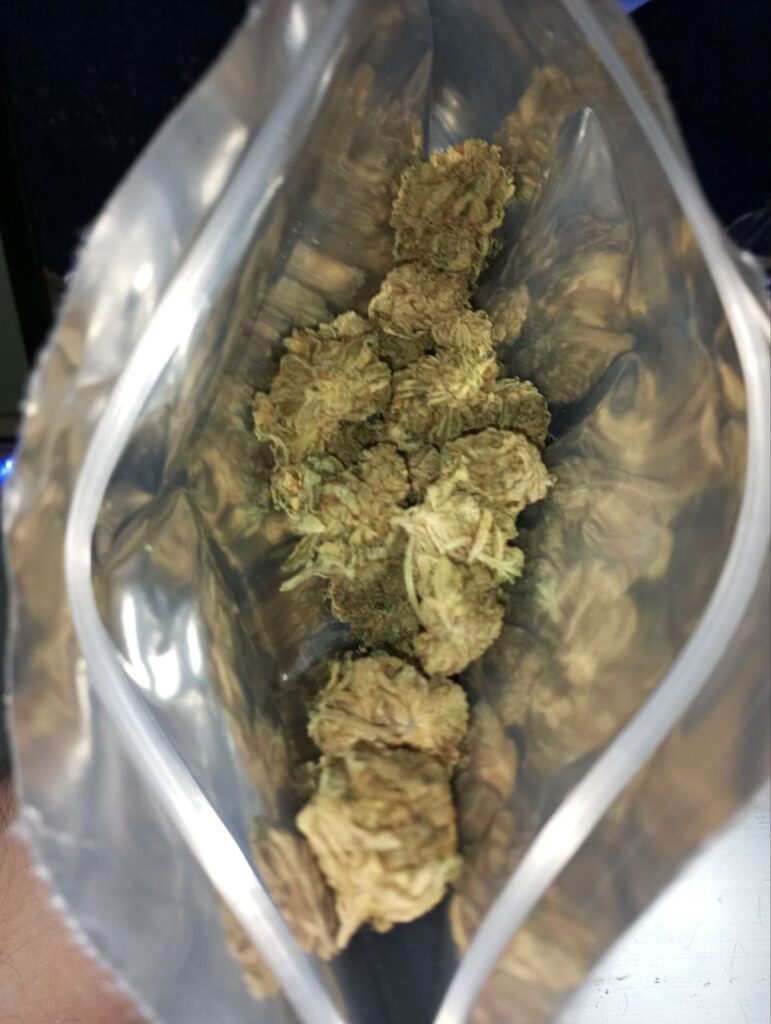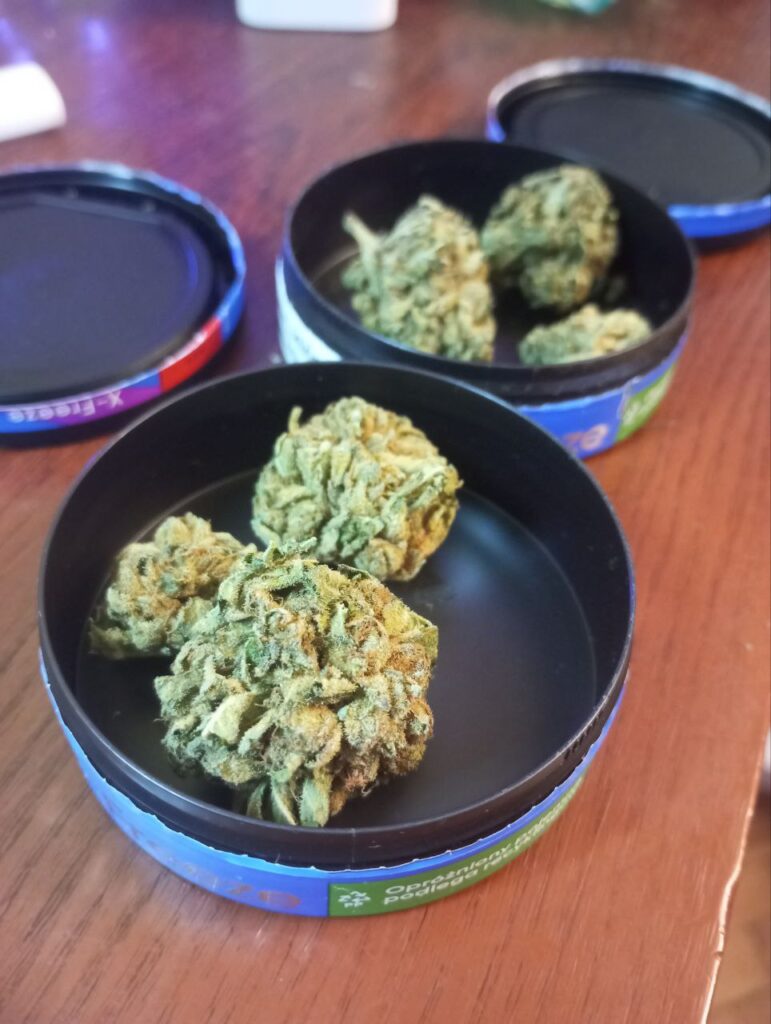Marijuana is considered one of the least harmful psychoactive substances. It is used in medicine, and in some Western countries, it is even legalized. Indeed, marijuana is less harmful than alcohol, which is available worldwide. However, cannabis use is also associated with certain risks. “Not today, not yesterday, not tomorrow,” co-founder of the Ukrainian Association of Psychedelic Studies Victoria Tushtuma discussed how to get out of a marijuana episode.
Victoria Tushtuma,
Doctor, Researcher
Today, many of us, free people, find ourselves in emigration and go through the pain of adaptation. We face loneliness, loss of joy in life, income, connections with loved ones. Marijuana copes with short-term pain relief: both on a mental and physical level. That is why this drug is often chosen in countries where it is legalized or widely available.
If you occasionally find yourself in prolonged uncontrolled episodes of cannabis consumption, this text is for you.
I have gathered my professional experience in pharmacology and advice from friends, seasoned researchers of the Universe, to create this guide on the simplest ways to exit a marijuana episode. Simple, because these actions require a minimum of your efforts at once and zero money. My approach will suit even those who have completely lost their power.
The advice is compiled into a short list for those who cannot get off the couch right now. In the second part of the text, there are tips for those who have gotten off the couch and want to learn to regain control over their consumption. Overall, the action strategy consists of three parts: reducing the dose, connecting energy sources, regaining control of will.
Main principle: small efforts lead to big changes.
Dose Reduction
Those who are stuck in a marijuana episode have usually made several attempts to quit but relapsed again. This is more typical than not; your case is not unique, the same arguments come to everyone’s mind. The good news is that many have overcome such states. The task of the first stage of withdrawal is to reduce the dose, but gradually.
Many people can stop smoking only when they run out of stash at home. This moment should be used to exit. Your task is to distract yourself from buying time and buy less.
If you have promised yourself many times not to buy and find yourself on the couch for the second week again, it means the promise was too difficult to keep. Here it is important not to fall into the trap of guilt and self-flagellation. If you belittle or get angry with yourself, it won’t help. You can help yourself by promising something more realistic. For example, don’t order new stash right away, but after two days. Or maybe you can hold out for a week? Or ten days? Every next day is your victory. If you order stash, order not five, but two. Try to stretch these two for the same period as it took for five. Remember: the decision is made in a sober state and when there is no weed at hand. If it’s already there, the decision has already been made. Agree with it, try to extract the maximum positivity from the purchased stash, and return to new attempts not to buy for a day longer than last time.
In your situation, there is no need to think about addiction as a whole. Controlling addiction becomes too global a task of completely changing the course of life. In emigration, you cannot throw in the towel and turn the wheel to change everything that weighs on you. This can be done in the comfort zone, but you are in the discomfort zone; any improvements here are much more expensive and meet much resistance from the environment. We will discuss this later, in the second part of the text, when you get off the couch.

Remove Triggers
To stay away from buying weed for longer, you need to identify your triggers and remove them from visible places. Tools for smoking, symbolism, music—hide them in closets or throw them away if you don’t mind. If there are circumstances, places, people that provoke smoking, avoid them as much as possible, at least for a while. You can’t throw all this out of your life because it’s cool, because you like it, and because it somehow makes our life better. But you can hide and distance yourself, physically or emotionally, for a while.
Connecting Energy Sources
Energy for restoring freedom and returning to life is taken from food, muscle movement, and sleep. Therefore, it is important to gradually restore biorhythms.
Sleep
If you’ve been falling asleep after midnight for some time, you won’t be able to go to bed on time right away. Try to go to bed 15 minutes earlier tonight than yesterday. When you’re about to turn off where you smoke, try to catch yourself thinking, where you already realize you want to sleep, but still think about smoking. This is the moment of decision when, instead of thinking about smoking again, you can get to bed. If there is any willpower left, go to bed before midnight. Even a small shift in sleep from morning to evening will help you recover faster. The best sleep is when the room is cold, and you are under a warm blanket or in pajamas.
Morning Food
You probably wake up with a terrible mood. Most likely, this is why you want to smoke from the very morning, and if there is such an opportunity, little will stop you. To gradually get rid of the terrible mood in the morning, you need to force yourself to eat food as quickly as possible. Not just any food, but fats and proteins. Coffee and a cigarette won’t do. Cereal, a bun, chocolate, cookies—no. You need to eat a small amount of something fatty or protein-rich: cheese, egg, sausage, a sandwich with peanut butter. Usually, people find it difficult to have a full breakfast until they are nauseous, but you don’t need a full meal right now. You need the first meal to be highly nutritious, with a low glycemic index, and right after you wake up. Do you feel nauseous at the thought of food? Ignore it and try to start with small bites. Start eating something for breakfast, and in a week, your mornings will become easier. And when you come to yourself, you’ll think about whether to go back to coffee with a cigarette.
Exercise
At any time of the day, try to go outside and walk to any familiar place: a store, work, cafe, river, noticeable building. If you couldn’t send yourself out today? It’s okay, go out on the balcony or look out the window at the planned route, try again tomorrow. If you can go outside, try to walk to the same place each time by a slightly new path. Our brain loves even the smallest novelty and rewards it with a bit of dopamine, which is so lacking in withdrawal.
Feeling too lazy to get up? Don’t go anywhere. Do ten squats. Too lazy for ten? Do one today, two tomorrow, and so on until you reach ten, and keep going until you step outside.
Another quick but healthy source of dopamine is a cold shower. Cold water showers are dreadful; no one enjoys doing them. But everyone enjoys the mood boost that comes afterward. Think you can never turn the cold tap? Everyone thought so until they learned the secret of the Wim Hof cult: you need to turn the tap gradually. Today, make the water just slightly cooler than usual. Tomorrow, make it cool. The day after tomorrow, or whenever you’re ready, make the water cold for just a couple of seconds. Gradually decrease the temperature and increase the time. Your goal: one and a half minutes under cold water, no more is needed right now. To start, try pouring water while sitting so you don’t fear losing your balance. Don’t force yourself; do it out of love for yourself, out of care.

Willpower Control Approach
It’s a mistake to think that willpower can be generated by effort alone. Willpower is the act of directing energy into action. To direct energy, it must be present. If you follow the steps described above for at least a week, energy will emerge. Then you need to properly allocate the forces you’ve managed to feel.
First and foremost, you need to extinguish the fires that cause a lot of anxiety. These are the important tasks that need to be done urgently or even yesterday. For example, let’s take filing a tax return, but the same approach can be applied to any task. A freelance project, a master’s thesis, any task that weighs on you and consumes energy through anxiety – it needs to be tackled first. How to approach it when you really don’t want to? With small steps.
You need to break down the big task into the smallest possible ones. For example, to file a tax return you need to: gather income from contracts, gather expenses from receipts, fill out the form, and submit it. But you’re really lazy. Try negotiating with yourself first to remember where the contracts are, how many of them there are. Next time, try finding one of them and placing it in a visible place. Do the same with receipts. Open the declaration form, look at it, and close it if it brings you down. Maybe next time you can manage to put a couple of numbers together. Yes, this still isn’t a completed tax return, but you’ll see how these small actions gradually reduce anxiety. Thoughts will naturally return to the task more and more often; choose microscopic actions that you can persuade yourself to do. This way, the big unpleasant task will gradually stop hanging over you like a guillotine and increasing your anxiety.
When you can already get enough sleep, cook food, and go outside, you’ve probably improved. You can continue to hone these skills and enter into controlled flight. The second part of this text is about that.
Benefit/Risk Ratio – Decision-Making Concept
Leaving the episode, you can try to establish harmonious relationships with the substance. Each person decides for themselves what harmony should be. Never smoke or just once a month, only with friends or once every two weeks alone. One approach to finding the best mode of use for any substance has been developed in clinical pharmacology. This approach is described by the benefit-risk ratio: it is most advantageous to consume a substance in a mode where the greatest benefit is achieved with the least risk. To incorporate cannabis into your life and get the maximum benefit from it with minimal harm, you should precisely define for yourself what benefit you expect and what harm cannabis brings in your particular case. It’s important not to idealize or demonize the substance. It’s neither good nor bad on its own, only your relationship with it is constructive or destructive.
For example, its benefits (or what people love marijuana for): it instantly relieves pain, including during mental breakdowns; you can enjoy music, food, the beauty of the world. Marijuana alleviates social isolation, creates inspiration, changes thinking patterns, insights arise. Also, it relaxes during sex.
But there are risks (things that worsen the quality of life): dissolution of will, decreased memory and thinking speed; paranoia, withdrawal anxiety, mood disorders; panic disorders, hallucinations; social isolation, deprioritization of anything not related to marijuana; uncontrollable spending.
If we analyze the benefits, we can notice that all its aspects are pronounced at the beginning of consumption or after a long break. But they “fade away” with the development of tolerance. Almost all negative aspects develop with prolonged use.
Sometimes acute panic attacks, delusions, and hallucinations can occur even with first use. This is often due to set and setting errors: uncomfortable surroundings, background anxiety, and excessive dosage. In rare cases, there is a predisposition to mental illness. Hence, everything people choose marijuana for is only available for a short period before tolerance increases. And everything that marijuana destroys in life begins with attempts to overcome tolerance by increasing the dose and fighting withdrawal symptoms with a new dose. Many have been in these states; they are not controlled until they are realized. Awareness through self-observation is the first step to gaining control.
It is optimal to use marijuana rarely, buy a little, and smoke no more than two days. This conclusion may seem obvious to some, but the value of the method is not in the conclusion. Its value lies in the process of self-observation, verbalization of personal thoughts, images, and identifying false beliefs. Evaluate the benefits through self-observation: why do you smoke marijuana, what good does it bring to your life? Write it down if necessary. If you find yourself in a stupor and inertia, observe that too: what could you be doing instead? How does marijuana change the flow of your thoughts, capture priorities? Such a mental path, not read, but walked in your own way, allows you to update cognitive settings. Thought has power, use it.

To get out of the dependence funnel for a long time, you need to understand what pain you are treating with marijuana. A psychologist can help with this, but if you cannot hire a specialist, learn to observe yourself with love. Most often, intelligent people with delicate emotional adjustments treat emotional pain and irrational fears with marijuana. What happens when the trigger to smoke kicks in? Thoughts, words, people, circumstances? What are you missing in your emotional life?
Right now, you may not have an answer, but by starting to look for it, you will definitely find it. By spinning this question in your head, you form an electrical dominant around it in the neural network, which will pull computational resources even when you are not focusing on it. The answer will come in the form of insight, and when it comes – look at it boldly, directly, and honestly. And you will understand what to do next. And remember: there is no will without energy, no change without action.
The article was created within the framework of the scholarship program of the Free Belarus Center.


